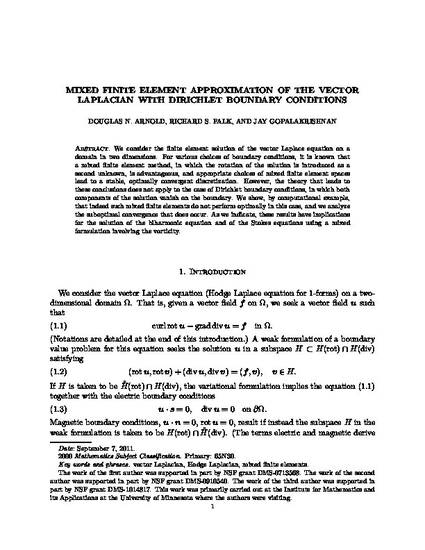
- Finite element method,
- Approximation theory,
- Laplacian operator,
- Biharmonic equations
We consider the finite element solution of the vector Laplace equation on a domain in two dimensions. For various choices of boundary conditions, it is known that a mixed finite element method, in which the rotation of the solution is introduced as a second unknown, is advantageous, and appropriate choices of mixed finite element spaces lead to a stable, optimally convergent discretization. However, the theory that leads to these conclusions does not apply to the case of Dirichlet boundary conditions, in which both components of the solution vanish on the boundary. We show, by computational example, that indeed such mixed finite elements do not perform optimally in this case, and we analyze the suboptimal convergence that does occur. As we indicate, these results have implications for the solution of the biharmonic equation and of the Stokes equations using a mixed formulation involving the vorticity.
© Copyright World Scientific Publishing Company

This is the author’s version of a work that was accepted for publication. The electronic version of this article was published in Mathematical Models and Methods in Applied Sciences, Volume 22, Issue 9.